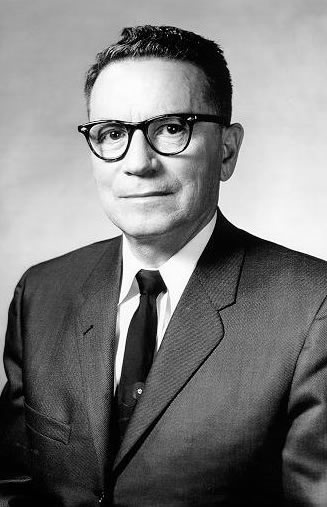Chapter II - Transmission Lines - Wave Equations
Chapter Outcomes
- Identify the conditions under which it becomes necessary to analyze a circuit using the TL model.
- Enumerate the characteristic parameters of a controlled geometry TL ($Zo$, $\alpha{}$, $\beta{}$).
- Represent a controlled geometry TL using a lumped circuit model and solve for the 2 wave (incident+reflected) solution that describes the voltage and current at any point across the TL
- Calculate reflection coefficient, transmission coefficient and SWR(Standing Wave Ratio) for terminated transmission lines.
- Distinguish between the different modes of waves on a TL (propagating, standing, propagating+standing, decaying, etc.) and what is the impact of the TL parameters and load in determining those modes.
- Calculate the different components of power in the circuit and differentiate between delivered power to load, dissipated power and stored energy.
- Identify impedance matching conditions that result in max power delivery to the load.
- Explain how TL parameters impact the fidelity of a transmitted signal and what are the conditions that need to be satisfied by the TL parameters to obtain distortion-less signal delivery.
- Design impedance matching networks using both lumped and distributed components including quarter wave transformers and stubs.
- Use Smith charts to find the different circuit quantities at any point along the transmission line which include reflection coefficient, impedance, voltage and current and conversely find locations of voltage and current maxima on the transmission line.
- Design impedance matching stubs using Smith chart.
Complete Chapter
Chapter Overview
In this chapter:
Transmission Lines Overview
Examples of Transmission Lines: controlled geometry lines
Circuit component size compared to
operating wavelength, λ
TL Analysis is needed if size is not too small compared to wavelength
Circuit Theory Analysis of Controlled Geometry Lines
RLCG Physically based Model (linear) - Distributed parameters
Use KVL and KCL to develop voltage-current relationships
Analysis in both Time and Frequency Domains
Second order differential equation for voltage as function of position and time
Solution in Frequency Domain
\[V\left(z\right)=V^+e^{-\gamma{}z}+V^-e^{+\gamma{}z}\] $I\left( z \right)=~\left( 1/{{Z}_{o}} \right)\cdot \left\{ {{V}^{+}}{{e}^{-\gamma z}}-{{V}^{-}}{{e}^{+\gamma z}} \right\}$ \[ Z_o=\sqrt{\left\{R_z+j\omega{}L_z\right\}/\left\{G_z+j\omega{}C_z\right\}} \] $\gamma =\alpha +j\beta =\sqrt{\left\{ {{R}_{z}}+j\omega {{L}_{z}} \right\}\cdot \left\{ {{G}_{z}}+j\omega {{C}_{z}} \right\}}$
Harmonic solution in Time Domain
Using Laplace Transform
\[
v\left(z,t\right)=\left\vert{}V^+\right\vert{}e^{-\alpha{}z}\cos{\left(\omega{}t-\beta{}z+{\varphi{}}_v^+\right)}
+\left\vert{}V^-\right\vert{}e^{+\alpha{}z}\cos{\left(\omega{}t+\beta{}z+{\varphi{}}_v^-\right)}
\]
\[
i\left(z,t\right)=\left\vert{}V^+/Z_o\right\vert{}e^{-\alpha{}z}\cos{\left(\omega{}t-\beta{}z+{\varphi{}}_i^+\right)}
-\left\vert{}V^-/Z_o\right\vert{}e^{+\alpha{}z}cos(\omega{}t+\beta{}z+{\varphi{}}_i^-)
\]
Transient solution in Time Domain
Only for Lossless Line $R_{z}$=$G_{z}$=0
\[
v\left(z,t\right)=v^+(t-[\sqrt{L_z \cdot C_z}] \cdot z)+v^-(t+[\sqrt{L_z \cdot C_z}] \cdot z))
\]
\[
i\left(z,t\right)=\left\{{1/\sqrt{L_z \cdot C_z}}\right\}\left\{v^+{\left(t-[\sqrt{L_z \cdot C_z}] \cdot z\right)}-v^-(t+[\sqrt{L_z \cdot C_z}] \cdot z)\right\}\]
Physical Insight
Two traveling waves: ''$+z$'' wave and ''$-z$'' wave both have same $Z_{o}$ and $\gamma{}$
$Z_{o}$: Characteristic impedance, $Ohms$ -- $\gamma{}$=$\alpha{}$+j$\beta{}$: Complex propagation
constant, m$^{-1 }$
$\alpha{}$: Attenuation
coefficient, Nepers/m -- $\beta{}$: Phase constant, rad/m
Phase velocity
$c_{ph}$=$\omega{}$/$\beta{}$, m/s -- Wavelength
λ$=c_{ph}/f$=2$\pi{}$/$\beta{}$, m
$V^+$ and $ V^-$ are determined by boundary
conditions at TL source and load ends
Reflection Coefficient
Define Reflection coefficient
$\Gamma{}(z)$=$\ \left(V^-e^{+\gamma{}z}\right)/\left(V^+e^{-\gamma{}z}\right)$
=''$-z$ wave'' /''$+z$ wave''
$\Gamma \left( z \right)=\Gamma \left( \ell \right)\cdot {{e}^{+2\gamma \left( z-\ell \right)}}$ -- $\Gamma{}\left(l\right)={\Gamma{}}_L=\left[Z_L-Z_o\right]/\left[Z_L+Z_o\right]$
$\Gamma{}\left(z\right)=\left[Z\left(z\right)-Z_o\right]/\left[Z\left(z\right)+Z_o\right]$ --
$Z\left(z\right)=Z_o\left[1+\Gamma{}\left(z\right)\right]/\left[1-\Gamma{}\left(z\right)\right]$
Reflections are caused by impedance discontinuities "mismatch -- not equal to $Zo$"
Traveling and Standing Waves
$Z_{L}$=$Z_{o}$,
$\Gamma{}$$_{L}$=0$\rightarrow{}$$\Gamma{}(z)$=0$\rightarrow{}Z(z)$= $Z_{o}$:
$V^{-}$=0, only "$+z$ wave", pure traveling wave, $\vert{}V$ $(z)\vert{}$=
$\vert{}V$ $^{+}$ $\vert{}e$ $^{-\alpha{}z}$
Magnitude constant except for decay due to attenuation (loss)
$Z_{L}=0+jX_{L}$,
$\vert{}$$\Gamma{}$$_{L}$$\vert{}$=1$\rightarrow{}$$\vert{}$$\Gamma{}$(z)$\vert{}$=1$\rightarrow{}Z(z)$=
0+jX(z): $\vert{}$V$^{+}$$\vert{}$= $\vert{}$V$^{-}$$\vert{}$, pure standing
waves, $\vert{}V(z)$$\vert{}$=2$\vert{}V$$^{+}$$\vert{}$cos($\beta{}z+$$\
\varphi{}$)
Wave does not travel, Magnitude has peaks (=2$\vert{}V$$^{+}$$\vert{}$) and valleys of zeroes (nodes)
$Z_{L}$$\not=Z$$_{o}$,
$\Gamma{}$$_{L}$$\not=$0$\rightarrow{}$$\Gamma{}$($z$)$\not=$0$\rightarrow{}$$Z(z)$$\not=$
$Zo$: combination of "+$z$'' and reflected "-$z$'' waves
Mix of traveling {$\vert{}V$$^{+}$$\vert{}$-$\vert{}V$$^{-}$$\vert{}$}, and standing
{2$\vert{}V$$^{-}$$\vert{}$} waves
Standing Wave Ratio, SWR = $V_{max}$/$V_{min}$=[1+$\vert{}$$\Gamma{}$$\vert{}$]/[1+$\vert{}$$\Gamma{}$$\vert{}$] -- $\vert{}$$\Gamma{}$$\vert{}$=0$\rightarrow{}$SWR=1, $\vert{}$$\Gamma{}$$\vert{}$=1$\rightarrow{}$SWR=$\infty{}$
Reflections: Power and Signal Delivery
Reflections (standing waves) reduce power delivered to load - also degrade signal quality
Mismatch causes dispersion to communication signals-Reflections limit bandwidth of digital communications
For optimum power & signal delivery, impedance matching at both source and load ends is necessary.
